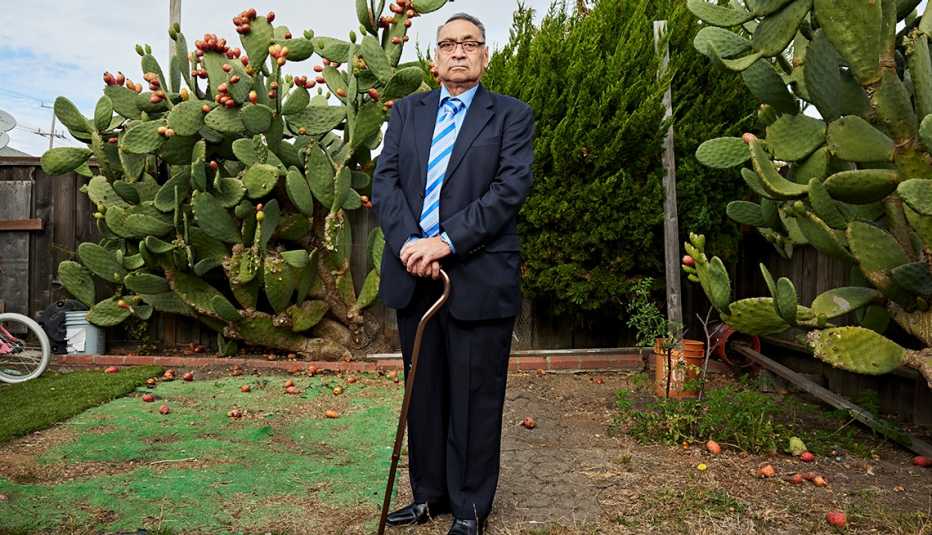AARP Hearing Center
Jose spent decades working in the nickel-plating industry in California, rising from the shop floor to become a manager at various companies. That was before a host of physical and mental health issues, including lumbar disc disease, asthma, depression and PTSD, forced him to stop working in his 50s.
The East Bay resident, who spoke on condition that he be identified only by his first name, applied for Social Security Disability Insurance (SSDI). His claim was approved in 2021 — but only after five years and two denials, during which time he was forced to go on public assistance.
“I had eight surgeries and couldn’t go to work,” he says. “It was real bad.”
Jose, now 63, is among hundreds of thousands of Americans who’ve been left in limbo for months, even years, by Social Security’s disability system, where prolonged delays on benefit decisions have become the norm.
In the late 2010s, it typically took the Social Security Administration (SSA) 110 to 120 days to process an initial application for disability benefits, according to agency data. Over the first eight months of the 2024 federal fiscal year, which began Oct. 1, the average was 230 days, or more than seven and a half months.
The average wait for a reconsideration by the SSA, the first step in appealing a denied claim, is seven months. If reconsideration is denied, It takes another 15 months on average to get to the next step, a hearing before a Social Security administrative law judge, the stage at which Jose finally won approval.
In one sense, at least, he was lucky. In a recent interview with AARP, Social Security Commissioner Martin O’Malley said 30,000 people died in 2023 while their applications for disability benefits were grinding through the system.
“I’ve been doing this since 1976 and it’s the worst I’ve ever seen,” says John Heard, a San Antonio attorney and former president of the National Organization of Social Security Claimants’ Representatives, a membership group for lawyers and professional advocates who focus on disability cases.


‘Delays are affecting everybody’
Social Security administers two types of disability payments. SSDI is a general form of disability benefit, available to people who have worked but can no longer do so due to a severe medical condition. Supplemental Security Income (SSI) is a safety-net payment for people who are 65 and older or have a disability and have very limited income and assets.
The programs differ, but the medical requirements to qualify for them are the same. You must have a medical condition that prevents you from earning substantial income and will last at least a year or result in death. The process is cumbersome at best, requiring extensive documentation of the applicant’s condition and multiple layers of appeals when claims are initially denied, as happens in most cases.
Those who have worked within the system for decades say there have always been delays, especially at the hearing level. But in recent years, everyone who files a claim is feeling the pain.
“We’ve seen a tremendous increase in the time it’s taking at the lower levels over the last two or three years,” says Chris Doherty, an attorney in Beverly, Massachusetts, who has practiced disability law more than 30 years. “The extraordinary levels of delay are affecting everybody, because everybody who applies is experiencing them.”
The delays are part of a larger crisis in customer service in the wake of the pandemic, which shut down Social Security offices to most in-person business for more than two years and saw the agency’s workforce shrink to its lowest level in a quarter-century, leaving those most in need in a prolonged state of uncertainty.
SSA officials largely pin the breakdown on chronic underfunding. The agency’s administrative budget has shrunk by 19 percent since 2010, accounting for inflation, while the number of beneficiaries it serves has increased by 25 percent, according to an April 2024 analysis by the Center for Budget and Policy Priorities, a Washington-based think tank.
































































More From AARP
How the 2024 COLA Affects Social Security Disability Benefits
Rising prices and wages change payments, income rules for SSDI and SSI beneficiariesHow are Social Security Disability Benefits Calculated?
An explanation of the formula used to determine monthly benefit amounts for Social Security Disability Insurance beneficiaries
10 Social Security Myths That Refuse to Die
Misconceptions about funding, retirement age and more
Recommended for You